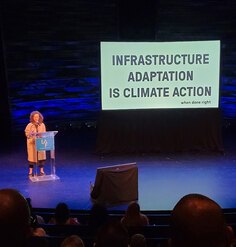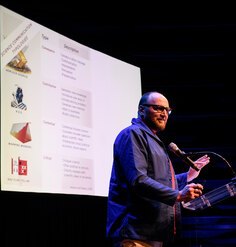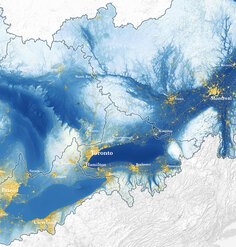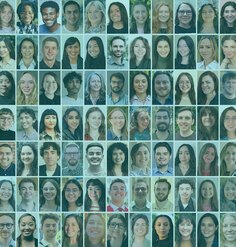LAF Fellow Doug Williams: Connecting Chicago Youth to their Environment
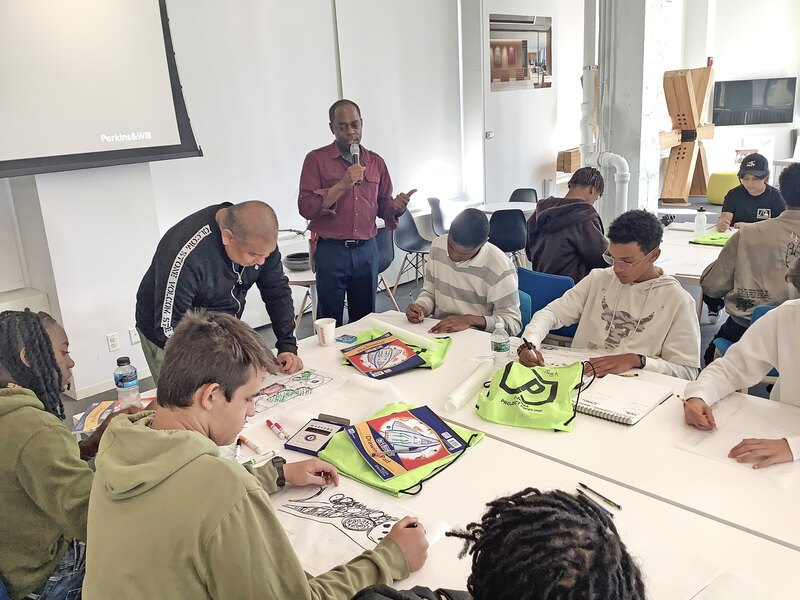
Climate change will affect us all, but communities of color are already disproportionately affected by flooding, heat islands, and climate inequity. The same communities are also disproportionately affected by pollution and other environmental toxins. Landscape architecture is a critical profession for solving these challenges, but few African Americans choose it as a career path. According to 2021 data from ASLA and the U.S. Census, only 2.1 percent of ASLA members identify as African American, compared to 13.4 percent of the U.S. population.
Dr. Douglas Williams, a 2023-2024 LAF Fellow, is trying to do something about this gap by engaging the youth. He wants to connect with the young people of Chicago—particularly Black K-12 students in marginalized communities—because he sees in these youth the future of landscape architecture and the future stewards of our environment. He believes landscape architecture can help them address their communities’ needs in the face of climate and other inequities. And he’s trying to find what interests them in landscape architecture as a STEAM (science, technology, engineering, the arts, and mathematics) subject and, for some, as a future career path.
Doug is a Chicago native, and it’s thanks to his Chicago community that he found landscape architecture, eventually becoming one of the first African American Doctors of Landscape Architecture in the US, finishing in the same year as C. L. Bohannon. (Other Black landscape architects have completed PhDs in closely related subjects like urban planning, horticulture, and other distinguished combinations.) As a teenager, he attended the Chicago High School for Agricultural Science, a part of Chicago Public Schools, where he became involved in the Future Farmers of America and the Minorities in Agriculture Natural Resources and Related Sciences. After high school, he went on to earn a bachelor’s in horticulture, then a master’s and PhD in landscape architecture. His thesis and dissertation work looked at the exemplary contributions of the first Black landscape architect, David Williston, to Black college campus designs and the value of vernacular community gardens in low-income Chicago neighborhoods and how they positively impacted African Americans.
Doug has always grounded himself in service to the community, informally as well as with larger volunteer commitments like AmeriCorps VISTA (now called Corporation for National and Community Service - CNCS). He sees the LAF Fellowship as an opportunity to immerse himself in his community and identify what resonates with youth and what inspires them to engage in shaping their environment.
He started his fellowship project by surveying existing public-facing programs, identifying those where African American youth in Chicago might be exposed to elements of landscape architecture. He’s looking broadly across national and community initiatives, from ASLA programs to neighborhood events, to see what methods and framing clicks with youth and gets them excited.
But it’s about more than just getting more youth to ultimately choose landscape architecture as a profession; raising awareness at the K-12 STEAM level also raises awareness for the value of landscape architects among families and communities and as these young people grow up and enter the workforce.
Doug sees this engagement as having the potential to combat climate change and inequity among the neighborhoods where he’s working, neighborhoods that are disproportionately affected by flooding, urban heat islands, pollution, and other environmental injustices. Landscape architecture can address many of these issues as well as bringing the mental health benefits of proximity to nature and green spaces. When conceptualizing how the discipline can help, Doug isn’t imagining a team of outside designers coming in to help a helpless population; youth and organizers in these communities are willing and able to improve their own neighborhoods and lives. Doug wants to give them the tools and career path that is landscape architecture and empower a generation of landscape changemakers.
He frequently references the work of Alice McIntyre and her 2000 book, Inner City Kids: Adolescents Confront Life and Violence in an Urban Community. McIntyre worked with African American, Jamaican, Puerto Rican, and Haitian in an inner-city community, codeveloping programs with them instead of for them. Could landscape architecture be another set of tools for these young people?
Doug believes this type of partnership and trust is critical. He’s not interested in coming in and starting his own separate, new program. He’s been building trust and relationships with existing communities and organizations, exploring how he can add capacity to groups with existing social capital and increasing collective efficacy. Relationships and long term investment are key.
This community involvement started before Doug’s LAF Fellowship, and it will continue beyond it. But when it comes to his fellowship year and what he hopes to accomplish in this timeframe, he’s selected twelve events with various partners where he can add landscape architecture expertise and capacity through co-production and other forms of involvement.
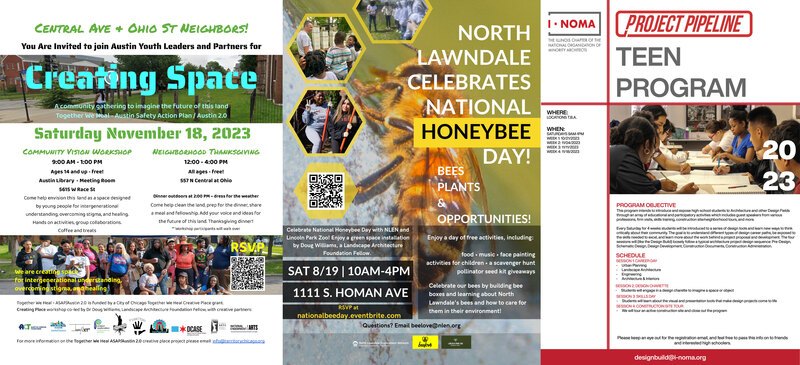
As he participates in each program, he observes them using ethnographic methods (involved-participant observation, immersion interviews, and Grounded Theory). Thanks to the fellowship stipend, he has also been able to hire a professional production crew to film these events for mini documentaries that will be used to highlight successful programs and share lessons on engagement drawn from his observations. (You can watch the first of these productions on his YouTube Channel and subscribe for more—coming soon.) Doug hopes these productions can serve as a narrative toolkit for others who share his goal of engaging young people in the discipline and increase the number of Black landscape architects.
One third of these events have already been held, with more to come:
In August, Doug co-created a green space installation for North Lawndale’s National Honeybee Day event, building awareness of landscape architecture into an event that combined environmental awareness with a social enterprise.
Later in the fall, Doug participated in a teen program with the Illinois Chapter of Minority Architects called “Project Pipeline.” Teens learned about architecture and other design fields like urban planning and landscape architecture, participated in various design vignettes and hands-on design thinking activities, and toured a professional design and planning office.
In November, he co-led a “Creating Place” workshop in Chicago’s Austin neighborhood. This was part of a larger event called “Creating Space: A Community gathering to imagine the future of this land. Together We Heal – Austin Safety Action Plan / Austin 2.0.” Residents came together to envision the land as a “space designed for young people for intergenerational understanding.” There was a time set aside to clean-up the space and a communal thanksgiving meal after their design charrette.
For Doug, the LAF Fellowship has been a welcome opportunity to take time out and focus on this project that’s been a side project for so long. It also has given him the space to explore new aspects of this work and new ways of communicating his findings, like the film productions. He feels inspired by the rest of his fellowship cohort. Their monthly meetings are a chance for everyone to share resources, exchange insights, and push each other to have a greater impact.
Members of the 2023-2024 cohort of the LAF Fellowship for Innovation and Leadership have been exploring their big ideas and advancing their proposed projects. The Fellows will present the culmination of their work at LAF’s Innovation + Leadership Symposium in June 2024 in Washington, D.C. In the meantime, LAF is profiling each Fellow to share more about their progress and personal journeys.
